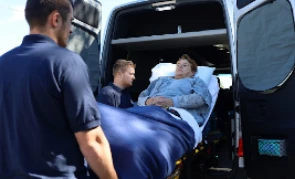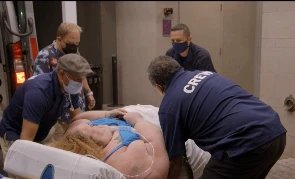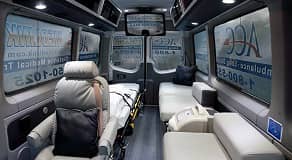Injuries happen all the time while on long trips to different states. Perhaps our loved ones have become ill due to some physical issues while on a business trip abroad or they just went to check on a family member in another state who has been in an accident. Another scenario could be a patient in need of necessary transport from one state to another. Or maybe, an elderly person requires medically-assisted transportation. In any instance, patient transportation services serve a vital role.
Patient transportation companies are specialized organizations that work with medical facilities to help patients who need skilled care during transport. It could be from state to state or over a long distance. These services do not use standard ambulances like the ones for emergency cases. They use customized vehicles because, in most cases, the patient is not in critical condition. Here are some of the processes that constitute such services.
Everyone involved in the process must receive initial training on how to handle different kinds of patients. Some customers can walk, others can be pushed in a wheelchair, and sometimes they must be pushed on a stretcher.
Once inside the transport vessel, what happens along the way is even more critical. The staff must observe the patient’s vitals at all times, ensuring they don’t suffer more problems. It is important to note that some patients cannot hold high altitudes or fast-moving vehicles.
Here are some of the training standards that teams receive:
In a humanitarian crisis, transports to burn centers are considered a high priority. However, the transport team has to decide whether such a process is futile. These centers are focused on saving the lives of those in critical conditions. The primary hospital may not be able to handle them because of workload, psychological effects, or other reasons. The burn centers put together resources to ensure the patients receive all the treatment required.
The transport company should be able to weigh the extent of the burn and know how to handle it. One important aspect to remember in this situation is psychological support. Hence, medical transport teams have the experience needed to handle such cases. Their priority is always on the needs of the patient.
The means of transport for such states depends on the severity of the burn. For instance, ventilated patients will require air transport while mobile ICUs can work well for shorter distances.
The patient should be well-protected from bacterial contamination. At the same time, a special dressing is necessary to ensure the patient does not suffer anymore.
There are situations where the patient is in a very remote area where certain transport vessels cannot reach them. Thankfully, emergency medical transport companies are well-equipped for such cases. Air transport would be the best solution.
However, it is vital to note that cost issues are the most significant issues here. Using air transport is not cheap. Unfortunately, most insurance companies do not cover such cases. Also, many Medevac companies do not have the latest authorizations, aircraft resources, or skills required for life-threatening situations. They can easily handle patients who can do most activities by themselves. Hence, sometimes the services are unsatisfactory compared to the cost. Nevertheless, many are trying to make sure such things never occur.
Aging patients may request medically-assisted transportation during relocation. This type of relocation is another process on a whole new level. The way these patients are handled is very different from other situations. Some aging patients cannot participate in normal activities by themselves, so the transport team should be ready to offer assistance.
And then there are medical transport services for the elderly who are transferred from one care center to another. In these cases, there must be particular communication to ensure the patient is continuously understood and cared for on routine activities. For example, the transport team should know about the medications, the prescriptions, the symptoms, suggested follow-up plans, current diagnostics, and more. This information helps ascertain the state of the patient and giving the appropriate assistance.
Another essential process linked to patient transportation is how they use their transfer methods. The first and most straightforward technique is the one-person lift. In this case, we are talking about assisting the patient into the vehicle (or transport vessel) and preparing for lift-off. The therapist must always have a clear view of the surface and be able to hold the patient from behind. In case the patient has a tracheotomy, it is vital that the medical person positions off to the side and gets low.
Also, transferring using a wheelchair should be done most professionally. If the patient can walk, the therapist should assist them to stand on their feet and hold their hand.
In situations where the patient cannot walk, it will require two or more therapists to do the job. It is all about the condition of the patient.
We all face different threats every day that may cause bodily harm. And when it happens, we may require special attention to the medical facility. And this is why patient transportation services are vital. Whether you are ill, aged, or injured, they can help you get proper treatment.

When choosing a medical transport service provider, you must ensure to choose one that not only focuses on getting you to your destination, but also prioritizes using the safest, most conducive, and most efficient sets of vehicle fleets and equipment to do the job.

ACC Medlink appeared on the TLC television network reality show “1000 LB Sisters” to transport one of the cast members from Ohio to a doctor in Kentucky. ACC Medlink, four of its employees, and the journey they took with Tammy Slaton were featured in episode 6 of season 4.

ACC Medlink is proud to announce the addition of a new line of elite medical sprinter vans to our long distance medical transport fleet. This addition will allow ACC Medlink to continue to provide superior service and outstanding care for those in need of medical transport out of state...
